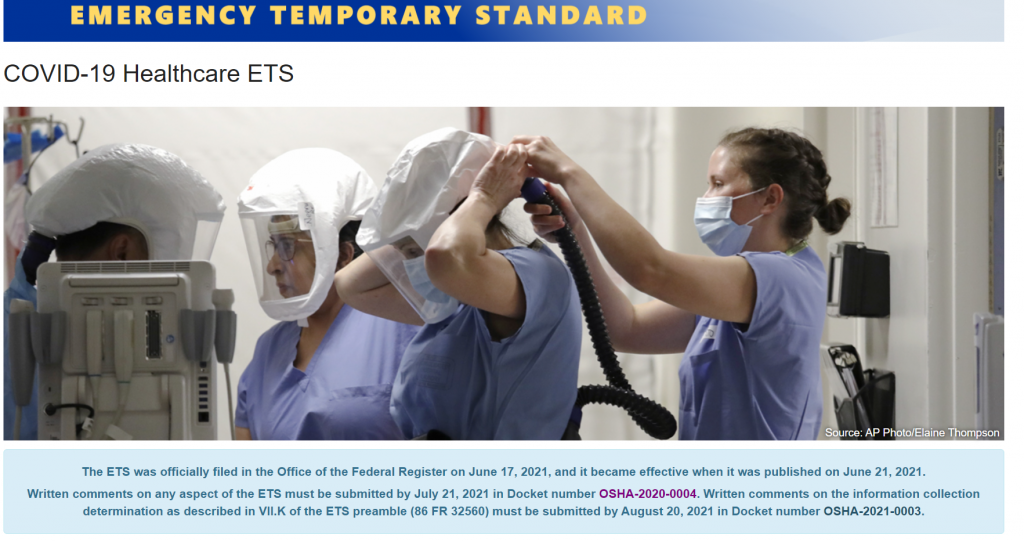COVID-19 protections for nurses and other health care personnel were long overdue on June 21, 2021, when the Occupational Safety and Health Administration (OSHA) published an Emergency Temporary Standard (ETS) in the Federal Register. In the notice, OSHA acknowledged that nearly a half million people working in health care had contracted COVID-19 by the end of May 2021, and more than 1,600 had died. It is reasonable to believe the standard is a little late, as some commenters have already responded to OSHA.
That said, the significance of OSHA’s action should not be overlooked. The ETS empowers nurses now to:
- Advocate for increased safety in their work site;
- Seek enforcement of concrete federal protections; and
- Voice a chorus of support for strong standards that will have force and effect during future pandemics.
A cornerstone of the ETS is the requirement for health care employers to develop and implement a safety plan to minimize COVID-19 risks to personnel. The ETS also specifies a number of concrete steps employers must take to reduce COVID-19 transmission in all areas of health care facilities. The ETS includes particular requirements in areas where nurses and other personnel have or may have contact with COVID-19 cases. For instance, on the issue of personal protective equipment (PPE), the ETS is very clear that effective respiratory protection means an N95 face piece, elastomeric masks, or powered air-purifying respirators (PAPRs).
Consistent with OSHA’s stance throughout the coronavirus pandemic, the ETS allows for contingency and crisis strategies when PPE is in short supply, such as limited reuse or extended use of N95s. However, OSHA believes that adequate PPE is no longer in short supply, citing the Food and Drug Administration and the Centers for Disease Control and Prevention. In the event of N95 shortages, OSHA says that employers should provide elastomeric masks or PAPRs as the preferred mitigation strategy.
In addition to PPE, the ETS spells out requirements on a number of COVID-19 protections in health care, including:
- Screening for COVID-19 and appropriate management
- Access to vaccination
- PPE for aerosol-generating procedures with COVID-19 patients
- Physical distancing and physical barriers on premises
- Cleaning and disinfecting
- Ventilation and air filtration standards
With the exception of a few requirements, OSHA expects employers to comply with the ETS beginning July 6, 2021. Nurses with information about violations of specific ETS requirements can contact OSHA with complaints. Complaints can be filed online or by calling 800-321-6742 (OSHA). The ETS warns that under federal law, employers must not retaliate against an employee who complains to OSHA. The ETA also provides that employers must not take actions against an employee who exercises their rights under the ETA specifically.
Nurses understand that the pandemic is not over, and there will inevitably be more pandemics and other public health emergencies. Nurses must not be on the frontlines of failed preparedness in the future. A permanent standard with strong respiratory standards is a necessity. ANA has urged OSHA to build on the ETS and develop a permanent standard that will protect health care personnel specifically from threats involving infectious diseases.
Nurses can comment on the ETS, through July 21, 2021.
ANA members can access our Policy Brief on the ETS here.
OSHA’s materials on the ETS are available here.


